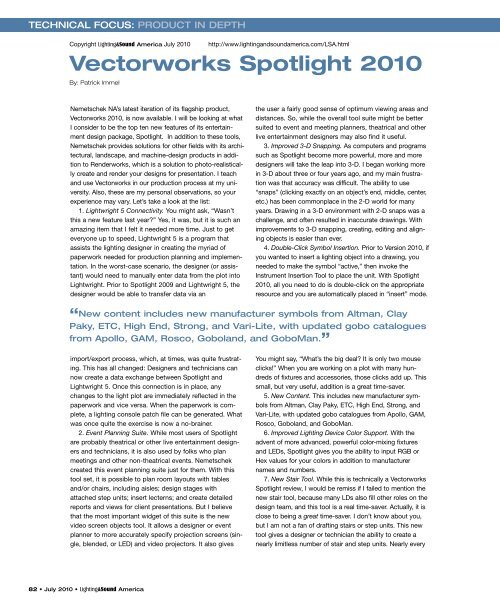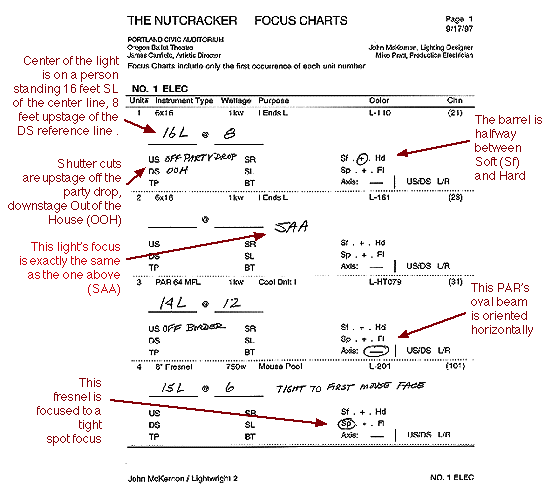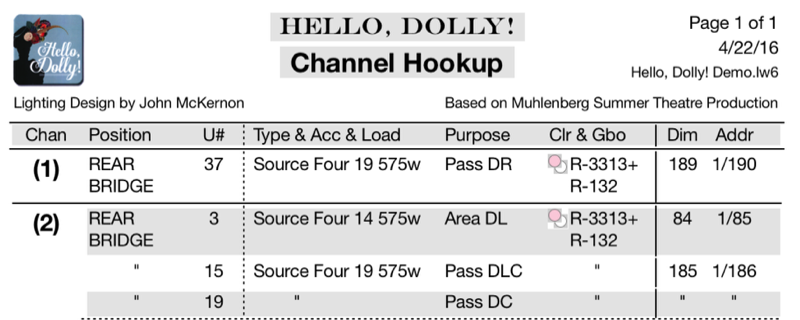
Lightwright 6 brings us Console Link for ETC’s Eos family, which changes the way we work in the theater by allowing console data to flow back and forth between Lightwright and the lighting console, including the ability to control console channels directly from Lightwright. Lightwright 5 brought lighting users Data Exchange between Lightwright and Vectorworks, changing the way thousands of designers develop their light plots by allowing Vectorworks lighting data to be brought directly into Lightwright, and allowing design changes to flow back and forth between the two programs. Lightwright 6, for the first time, fulfills a longtime industry dream of controlling the flow of lighting data from design to console without needing to enter data multiple times by hand, while documenting up to 45,000 universes of data. John McKernon will be on hand all three days to demonstrate the new features and to speak with present and future Lightwright users.Īs the lighting world has increased in complexity due to the proliferation of moving lights and LEDs, the organizational demands on lighting designers, design assistants, and electricians has continued to grow.

Lightwright 6 will be launched at USITT 2016 on March 17-19th in Salt Lake City.
#Using focus feature on lightwright 6 install#
Lightwright is an iconic industry standard on Broadway and in other areas of live entertainment, and was created to help designers and electricians record and keep track of the vast amount of data needed to install and maintain a lighting installation.

#Using focus feature on lightwright 6 software#
John McKernon and City Theatrical have announced that Lightwright ® 6, the newest version of the industry leading, multi award winning software for managing entertainment lighting paperwork, will be released in April 2016. Lightwright 6 has dozens of other new features for lighting users, including a built in label maker. New in Lightwright 6 is Console Link for ETC’s Eos family, which allows console data to flow back and forth between Lightwright and the lighting console, including the ability to control console channels directly from Lightwright. Lightwright 6 helps users the flow of lighting data from design to console without needing to enter data multiple times by hand, while documenting up to 45,000 universes of data. As LEDs and moving light proliferate, the organizational demands of tracking lighting has only increased. John McKernon and City Theatrical will launch Lightwright 6 at the USITT show, and release it to users in April. Whether the orientation is from the perspective of the light or the way it falls on the floor is up to you: just be consistent and include a note on your title page showing which way you did it.The latest version of Lightwright will be released in April You can also circle either the horizontal or vertical bar or L/R or US/DS instead of drawing an arrow. If you're focusing a PAR or other light which has an oval beam, then you draw a little arrow in next to "Axis:" showing the orientation. If you're using a fresnel and want to indicate Spot or Flood focus, you circle Sp, Fl, or somewhere in between. If you want to indicate Soft or Hard edges, you circle Sf, Hd, or somewhere in between. If you're focusing a front-of-house light and you want to indicate a cut off masking borders overhead, you'd probably say "TP Off Borders" instead of "US Off Borders" just because it's more what you want to do. It depends on where the light is pointing and what would be clearer to understand. Fill in whatever parts of the chart make sense for each light, and leave the rest blank. US, DS, TP, and BT can sometimes mean the same thing: For example, a shutter cut on the top of a light may well be the same as an upstage cut. Once the light is focused on you, the electrician locks it down and begins to make shutter cuts, which are indicated in the body of the chart below the dimensions. If you need to be sitting down or standing on something when the light is pointed at you, be sure to include that in the chart. If you need to stand someplace downstage of your zero line, then the US/DS distance is shown as a negative number.

The electrician points the light at you there.

To focus each light light, you stand wherever the chart says to.


 0 kommentar(er)
0 kommentar(er)
